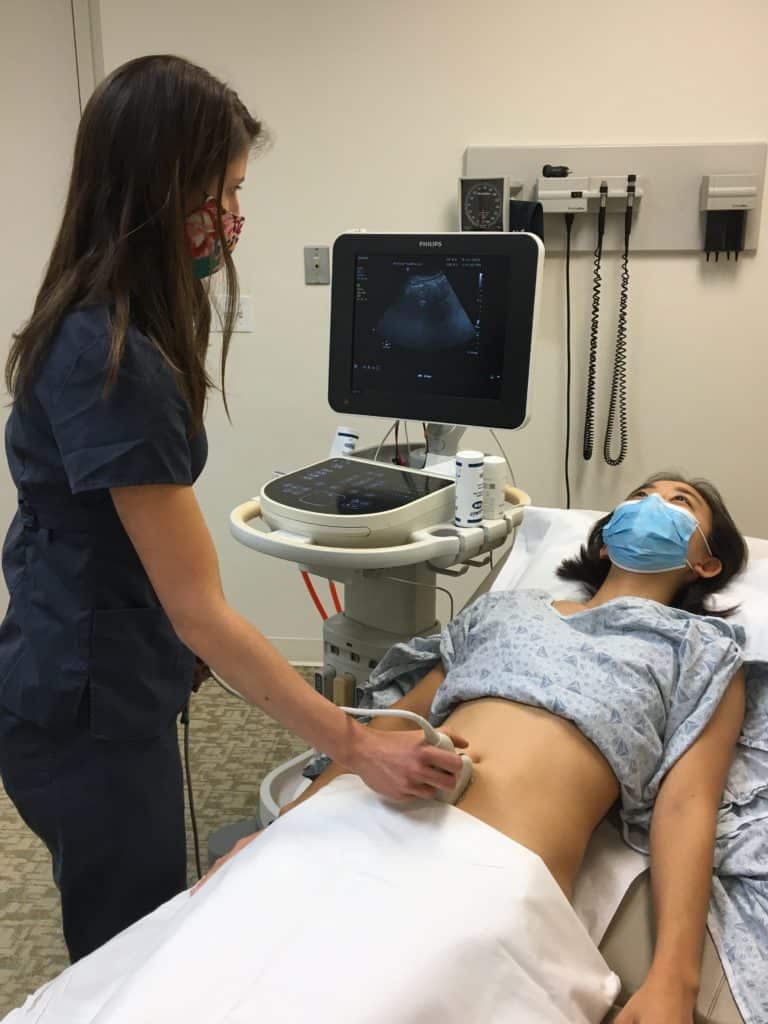In women’s healthcare, diagnostic imaging plays a crucial role in understanding various reproductive health issues. One of the most common and effective methods used by healthcare providers is the Transvaginal ultrasound. Though it may sound complex, this procedure is straightforward, safe, and provides highly detailed images that are essential for diagnosing and monitoring various conditions related to the female reproductive organs.
In this article, we’ll explore what a transvaginal ultrasound is, why it’s done, what to expect during the procedure, and its benefits.
What is a Transvaginal Ultrasound?
A transvaginal ultrasound is an internal pelvic ultrasound where a probe (called a transducer) is inserted into the vagina to capture images of the female reproductive system. This includes the uterus, ovaries, fallopian tubes, cervix, and vagina. Unlike an abdominal ultrasound, which uses a probe on the outside of the body, this procedure allows for clearer and more detailed images because the transducer is closer to the organs.
This procedure is sometimes referred to as an endovaginal ultrasound and is widely used for assessing reproductive health in both routine and emergency situations.
How Does a Transvaginal Ultrasound Work?
The transvaginal ultrasound works using high-frequency sound waves. When the transducer is inserted into the vagina, it emits these sound waves, which bounce off the surrounding tissues and organs. The returning echoes are then converted into images on a monitor, allowing doctors to closely examine the organs for abnormalities.
Since the transducer is closer to the reproductive organs, it provides clearer and more accurate images compared to other forms of ultrasound, making it a preferred method for early diagnosis and monitoring.
Why is a Transvaginal Ultrasound Performed?
A transvaginal ultrasound is performed for a variety of reasons, particularly when more detailed information is needed about a woman’s pelvic region. Common reasons for this procedure include:
- Pelvic Pain: If a woman is experiencing chronic or sudden pelvic pain, a transvaginal ultrasound helps identify the cause, such as ovarian cysts, fibroids, or endometriosis.
- Abnormal Bleeding: Women with irregular menstrual cycles or postmenopausal bleeding often undergo this ultrasound to determine if there are underlying problems with the uterus or other reproductive organs.
- Early Pregnancy Monitoring: In early pregnancy, especially during the first trimester, a transvaginal ultrasound is used to detect the fetal heartbeat, ensure the pregnancy is progressing as expected, and check for potential complications like an ectopic pregnancy.
- Fertility Issues: For women undergoing fertility treatments, this ultrasound helps track ovulation, examine the ovaries, and measure the thickness of the uterine lining.
- Suspected Miscarriage: If miscarriage is suspected, this ultrasound can help confirm whether the pregnancy is still viable.
- Cancer Screening: In some cases, transvaginal ultrasounds are used to screen for ovarian or uterine cancer by detecting tumors or abnormal growths.
Is a Transvaginal Ultrasound Safe?
Yes, transvaginal ultrasounds are completely safe. They do not involve any radiation, making them a safe option for both non-pregnant and pregnant women. The sound waves used in the ultrasound are harmless and pose no risk to the patient or a developing fetus. Some women may experience mild discomfort during the procedure, but it is generally painless and non-invasive, apart from the insertion of the probe.
What to Expect During the Procedure
Knowing what to expect during a transvaginal ultrasound can help ease any anxiety you might have. The process is quite simple and usually takes no more than 30 minutes:
- Preparation: You may be asked to empty your bladder before the procedure to improve the clarity of the images. In some cases, a partially full bladder might be required for specific views.
- Positioning: During the procedure, you’ll be asked to lie down on an examination table with your legs bent and feet in stirrups, similar to a pelvic exam.
- Insertion of the Transducer: A small transducer, about the size of a tampon, is inserted into the vagina. It is covered with a protective sheath and lubricated to minimize discomfort.
- Image Capture: The technician will gently move the transducer to capture different views of the reproductive organs. You may feel slight pressure or movement, but the procedure should not be painful.
- Review: After the procedure, the images will be reviewed by a radiologist or your healthcare provider. In many cases, your doctor will discuss the results with you on the same day or within a few days, depending on the findings.
Benefits of a Transvaginal Ultrasound
There are numerous benefits to having a transvaginal ultrasound, including:
- Detailed Imaging: Since the transducer is placed inside the body, closer to the reproductive organs, the images are much clearer and more detailed than those obtained through abdominal ultrasounds.
- Quick and Painless: The procedure is generally quick and non-invasive. It provides essential information without the need for surgery or more invasive diagnostic procedures.
- Early Detection: This ultrasound is particularly valuable for detecting conditions early, whether it’s a developing pregnancy or issues like fibroids, cysts, or tumors.
- Safety: As there’s no radiation involved, transvaginal ultrasounds are completely safe, even during pregnancy.
Are There Any Risks?
There are virtually no risks associated with a transvaginal ultrasound. The sound waves used are not harmful, and the insertion of the probe is done gently. Some women may experience mild discomfort, especially if they are sensitive or nervous about the procedure, but this discomfort is typically short-lived.
Conclusion
A Transabdominal ultrasound is a crucial diagnostic tool in women’s healthcare, offering a detailed look at the reproductive organs. Whether it’s being used to monitor early pregnancy, investigate pelvic pain, or diagnose abnormal bleeding, the procedure is safe, efficient, and provides invaluable insights into a woman’s health. If your doctor recommends a transvaginal ultrasound, it’s a routine and commonly performed procedure that can provide clear answers to many reproductive health concerns.





Comments